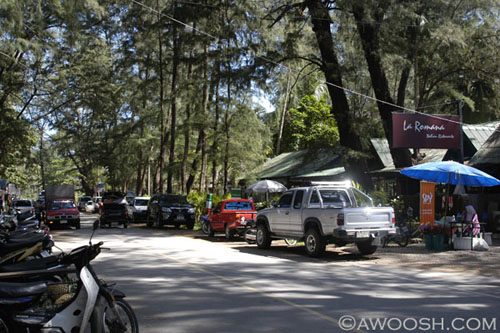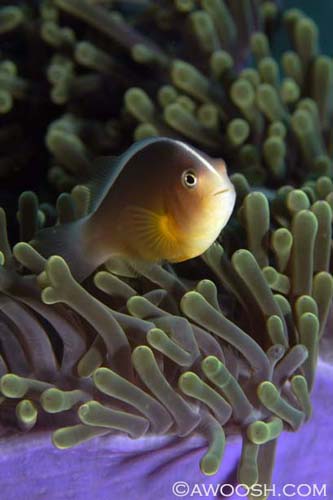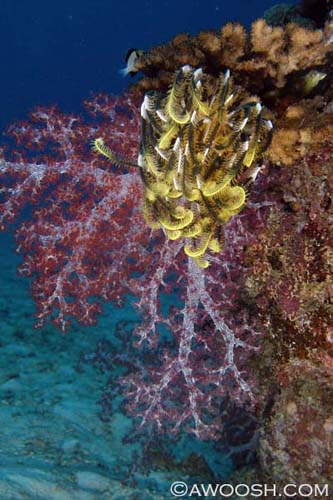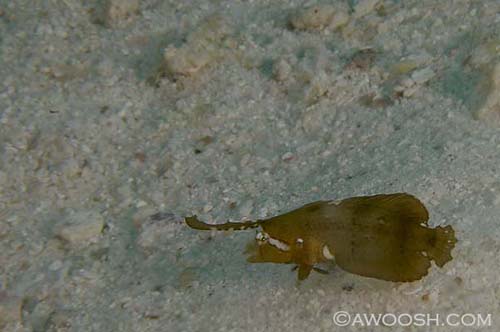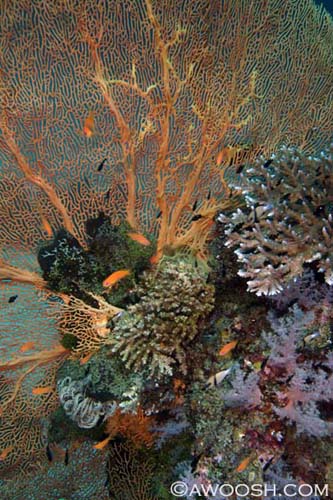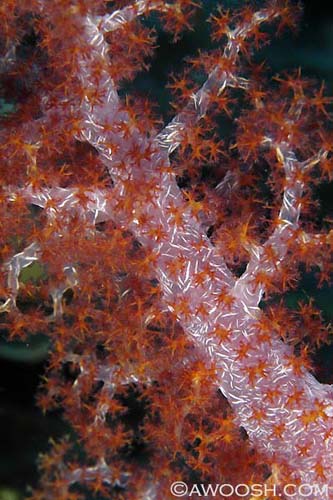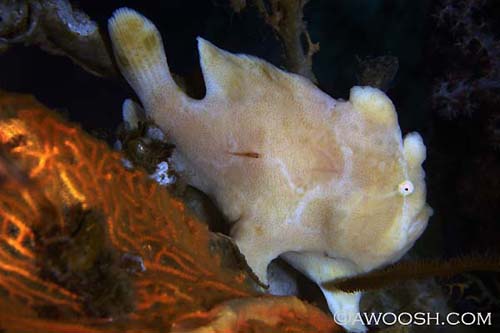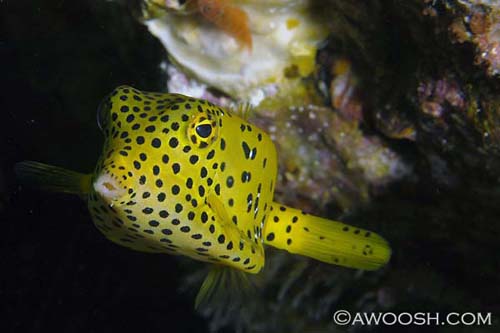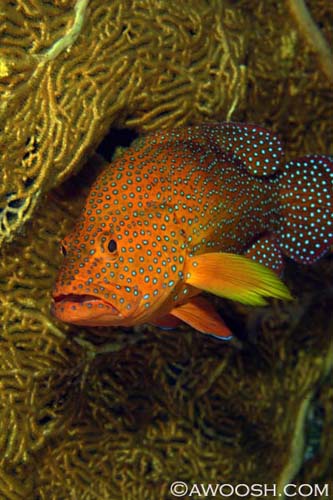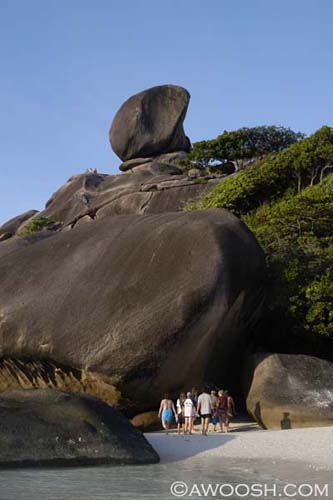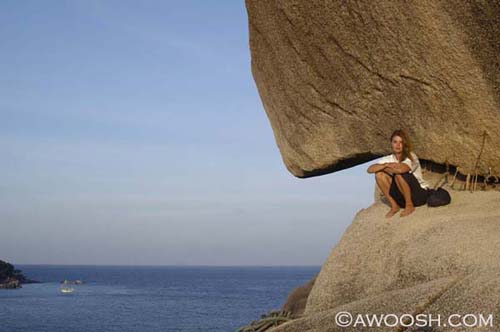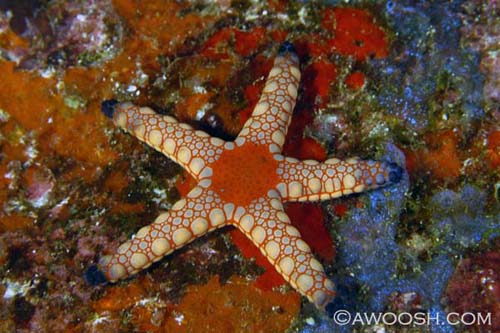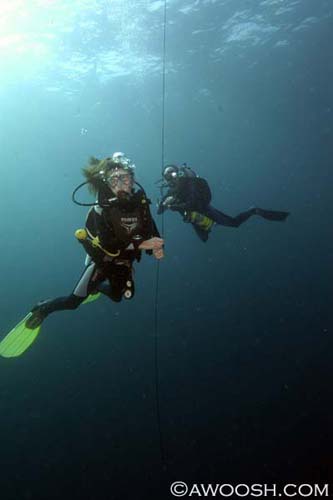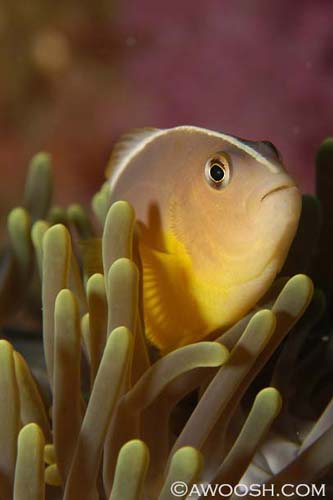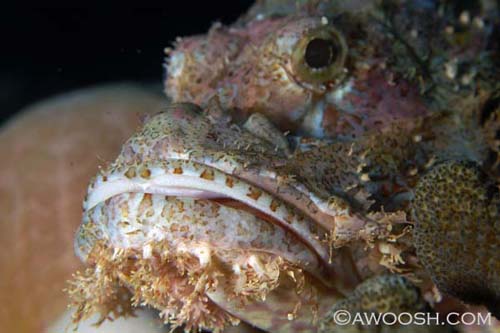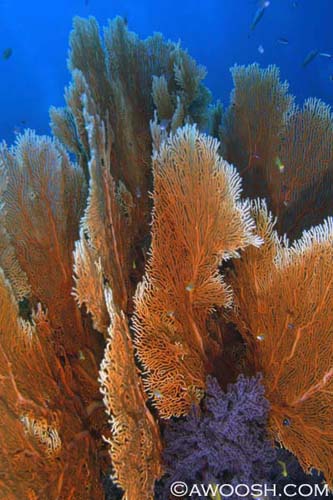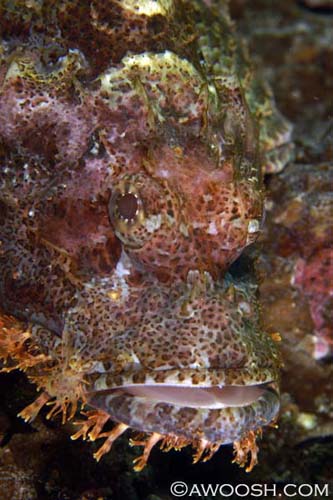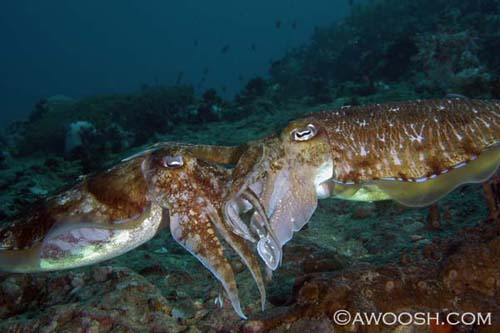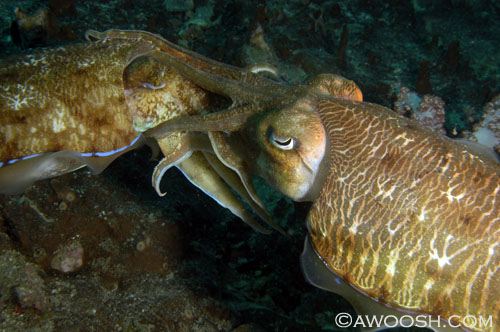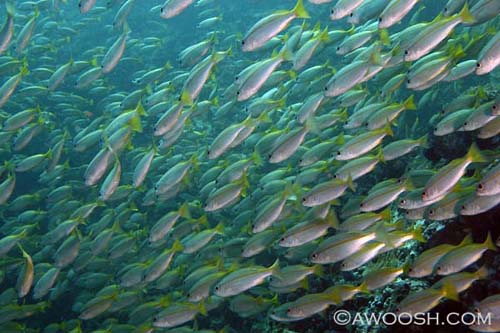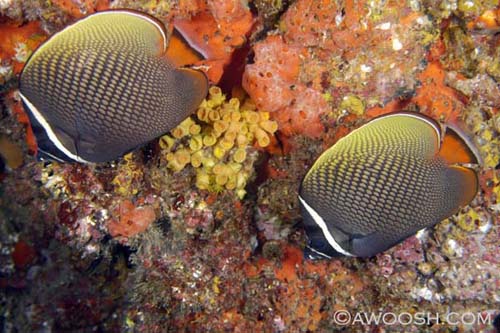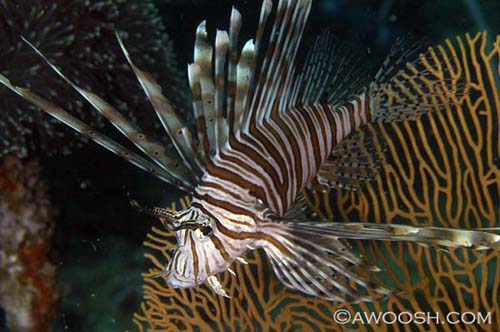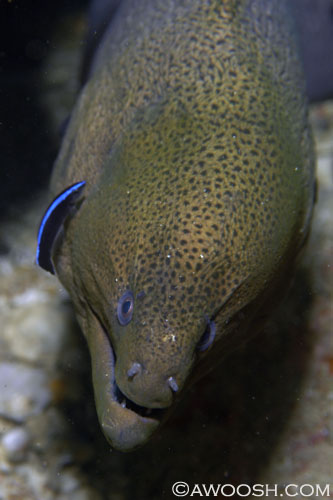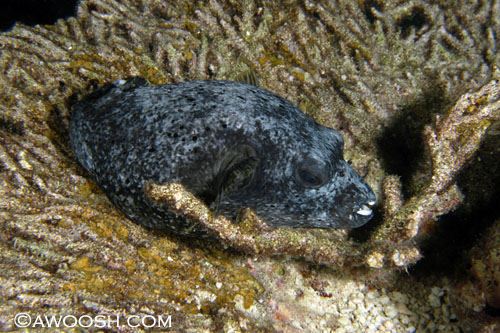Thailand 2007 Part Two - The Indigo Pearl (Nai Yang Beach) As I detailed in the flight from hell saga, we ended up with a fairly short stay at this lovely resort. Located five minutes from Phuket Airport, far away from the zoo that is Patong/Karon/Kata beach areas, across the road from Nai Yang beach, this is the perfect place to start or finish a dive trip to Phuket. The Indigo Pearl is beautiful – lush gardens, several pools (a couple with infinity edges), serene and well-appointed rooms (even the cheapest level accommodation, which we booked) and interesting architecture. This place is a jewel. With careful shopping through internet hotel sites, good prices can be found for the Pearl – what was about $250 per room per night (fabulous breakfast included) would easily be in the $500 range in most other resort areas we have visited. It was a bit of a splurge, but we enjoyed staying at the Pearl immensely. Nai Yang beach is pretty and uncrowded. It does not have the great sand of a beach like Karon, but less beach vendors and a choice of good Thai eateries and an open air massage place makes this a worthwhile destination. I noted that there are several dive ops in the village (including one on-site at the Indigo Pearl) that offer local diving as well as day excursions to the Similan Islands, etc. Before booking, I’d want to enquire about the vessel they use – I don’t think diving from a longtail is all that easy nor safe – especially the longtails that make the long day trip run up to the Similans. You should make sure that the boat has minimum dive safety standards - working radio, running lights, lifejackets for all passengers and crew, oxygen, first aid kit and drinking water at a minimum, and ideally sun cover. I won’t go out on a boat that does not have this stuff on board (sun cover excepted). There are stories of some Thai tour companies running very unsafe operations – some work needs to be done on Thailand tourist safety enforcement.
Da Junk on Da Junk (Andaman Sea Diving) The Junk is not a luxury vessel, but nor is she a dump – she is a steady and solid dive platform that has been plying the Andaman Sea since owner Frank deGroot was seized with the notion of buying a derelict Chinese Junk and converting it to a tourist diving craft – an ambitious, and by all accounts, entirely successful, undertaking. The boat offers several itineraries – in peak dive season (November to early May) the boat does a set 6 night/5 day itinerary out of Patong Beach. Board the boat in the early evening, do an overnight navigation to the Similan Islands, then 5 days of diving at the Similans, Koh Bon, Richelieu Rock, Surin Islands, back through the Similans and then another overnight navigation back to Patong. Four dives are offered most of the days, including a night dive. We were offered one land tour opportunity, in the Similan Islands. In the rainy, inclement season (May to October) the Junk does shorter junkets (ar, ar ;^) in the southern regions – to Phi Phi, Anemone Reef, Shark Point, Racha Islands etc. Accommodations The cabins on The Junk are basic, but clean, comfortable, air-conditioned (controls in each cabin), and all have en-suite toilet and shower facilities. All passenger cabins are below decks, accessed by one main hallway that runs the length of the boat (punctuated by a couple of big masts), and are all essentially of the same quality, just with different bunk configurations – 2 doubles, 2 triples and 2 quads. Cabins are cleaned daily by the crew. Earplugs are a good idea as the ship can be a bit noisy when underway. This boat would not be a good choice for disabled divers, due to steep stairways to the cabins and continual necessary boat access to and from the dinghy. Food & Beverage Meals are all buffet style, served in the salon. There is seating in the salon area for a full load of 18 passengers, in a pinch. Passengers can also take their meals to eat out on the foredeck – there are some plastic chairs there, as well as a large raised wooden “box” for lounging upon and a couple of perches near the bow. There aren’t any couches or comfy chairs in the salon area – just banquette seating around the perimeter with two parallel longish tables, and stools inboard. The food on this trip was thumbs up – first breakfast (self-serve toast and cereal before the first dive), followed after the first dive by a standard English-style breakfast (eggs, bacon, sausage, fruit, croissants, cereals etc). Lunch and dinner were mostly Thai extravaganzas (with a few Western offerings like the occasional pasta or hamburgers). There were never fewer than a half dozen Thai dishes to choose from – fantastic traditional Thai cuisine, including requisite spicy curries – also some veggie dishes (to accommodate several passengers, including a couple of the Ps, who are vegetarian), with other dishes featuring chicken, seafood or pork. Always some steamed rice and some salad fixings were offered, as well as ample prepared fresh fruit – mostly mango, pineapple and pomelo. Desserts don’t seem to really happen in Thailand, but there were ever-replenished tins of cookies and candies and a fruit basket to dive into, as well as an occasional sweet concoction trotted out of the galley. The cook was a delightful Thai lady who took great pride in her offerings. Also ever-functional is a hot beverage station – basic but effective – drip coffee (by the mug), teas and hot chocolate. Water is of the bottled variety, supplied from large plastic carboys with a dispenser – guests are assigned a mug on a numbered hook for the week, and can use that for all beverages.
Pop (aka soda in the US), Beer and Wine are available, at extra, reasonable charge. Dive Deck & Briefings All divers are assigned to a dive station and a group at the beginning of the trip. Two tanks are assigned per diver, but only one gets used, which is a common practice on the live-aboards I’ve been on, so gear is not switched over between dives and stays put on a tank for a week. The dive deck is not covered, except for the center when they put up a tarp over the boom around midday so passengers can loll in the heat without getting broiled. There are no gear rinse tanks, although there is a tank for rinsing cameras/computers and another for wetsuits. At the end of the dive week the camera tank is used to rinse gear before hanging it up to dry on some lines run from the rigging. There is also a large container of fresh water and a ladle for rinsing off on deck after diving. Tanks are refilled at the dive stations between dives. There is a small storage locker under each station for personal gear and weight belts. All dives are done from a zodiac. Gear is donned on the Junk and then divers descend a short ladder to a loading platform. There are plenty of crewmembers on deck to assist the descent, as well as hand down fins, cameras etc. At the end of the dive, divers doff their weights and gear in the water and hand it up. There is a small ladder, or macho divers can haul themselves up over the gunnels of the zodiac. Gear is piled in a heap on the zodiac to be transported back to the Junk. The nimble crew unloads the gear off the panga and miraculously returns all the bits to the appropriate diver's station. It all works very smoothly. Maximum dive group size on The Junk is 6 passengers. Divemasters are assigned to their group for the duration, and are in the water on every dive. In our experience the Divemasters on the Junk were more helpful and enthusiastic than meddling or militant. Our average dive time was one hour – we were requested not to exceed that due to time to refill tanks/move the boat to new sites etc, although we did squeek in a few longer ones when we were first group in and last group out. Surface intervals were long – dive profiles and practices on the boat are on the conservative side. Not that there is anything wrong with that. Unfortunately, Nitrox is not currently pumped on The Junk. During our week (December 22-28, 2007) there were three very capable divemasters on board – Mick, Keith and Pae. Mick, a Brit, is de facto head honcho in charge of passengers and dive decisions on the boat – a very nice man who has been on The Junk for many moons and still approaches each day with unbridled enthusiasm and bonhomie. The laconic Keith is a (hunky) Scotsman, and he has been on the boat for a couple of years, and Pae is a local Thai DM who was filling in for a regular crew member for the week – all of them were interesting and capable folks who clearly love to dive. Pae was our Divemaster, and we enjoyed our dives with her. Dive briefings are delivered in the salon before each dive alternately by Mick and Keith. The dive briefings during our week on board were very thorough and entertaining, and included detailed diagrams of the reef structure and features, and pictures of reef residents that we should look for. Dive sites are accessed via zodiac. Each group is loaded up and then ushered to the site, so drop offs and pickups are duly staggered. The groups rotate daily so that each group has a chance to be first in at some point on the trip. The helpful crew assists with getting divers down the ladder and onto the zodiac (a bit awkward all geared up). Then the bosun does his little reminder jingle – “Mask, weights, fins, computer, camela, air on!” and then off the zodiac speeds. It all works very efficiently. On return, divers (sans gear) climb the ladder back on the main deck of The Junk and the crew returns the gear to each diver’s station. Water temperature was consistently 80 degrees and up. Most divers were comfortable in a 3/2 mm full suit, although a brave few sported a shortie. Personally, when there are (possibly) stinging critters in the water, I prefer to be fully covered. A hood is always a good thing too.
Day One – Similan Islands After an overnight navigation from Patong Beach, we awoke to the beautiful scenery of the Similan Islands. For those who are not early risers, you will be treated to a unique and entertaining wake up call from the feisty bosun on board, which I won't describe so I won't spoil the surprise ;^) Suffice to say that I set my own alarm every evening to arise to watch the show over a cup of fresh-dripped coffee. This lovely group of islands offers numerous nice dive sites. Dive 1 - The Channel This is the Junk’s preferred check out dive site. The terrain is a sloping sandy reef with patchy coral outcroppings (small bommies), and little current. Maximum depth for our group on this dive was 75 feet. The kids, who hadn’t been in the water for a while, got quickly into the zone, and then we went for a nice dive. The site was teeming with life, which made for a great introduction to Thai diving – I mean, man, if this is a checkout, how good is this going to be? The highlights for us were the huge aggregations of glassy sweepers and billions of baitfish (which we would see on almost every site we dove in Thailand), several varieties of anemone fish, scorpion fish, giant clams, sweetlips and schooling fish.
Dive 2 - Morning Glory This site is all about a glorious large bommie that is thickly encrusted with colourful hard and soft corals, as well as numerous healthy sea fans. Again with the baitfish – so dense at times that it was difficult to see the reef. I could have easily spent an hour exploring the bommie – there was so much life and beauty to it, but clearly, the DM’s plan was to tour. Once we left the bommie, we scooted over sand flats, again featuring coral outcroppings. As I sculled slowly over the sand, something small, fluttering in the slight surge, caught my eye. Easily mistaken as a bit of seaweed, the teensy creature was (I think) a juvenile rock mover wrasse. Beauty.
Dive 3 - Elephant Head Moving the boat between dives brought us to this singular site. A huge jumble of rock boulders, some as much as 40 feet high, created numerous neat ledges and steep-walled swim-throughs, again pulsing with life. Although the boulders were not so much encrusted with stuff, there were some pretty patches of pink and purple soft corals, and literally fields of multi-coloured Christmas Tree Worms. Highlights of this dive were schooling Sweetlips (sadly no pic for me as I was careening after my group who were rapidly disappearing into the murky labyrinth, so did not stop to photograph them) – it was the only location where I saw this behavior – otherwise the Sweetlips we saw were diving solo. Highlights that I did manage to capture were a large frogfish, perched under a sea fan, and a colourful coral trout posing in front of a sea fan.
Hiking in the Similans We were offered only one opportunity to go ashore during our 6 days on the Junk. It is my understanding that many of the islands are sanctuaries, where people are verboten to set foot. Keeners were ferried by panga to the sandy beach of this distinctive island, an area commonly known as "Dog's Head" or "Donald Duck" due to the unusual rock formations of the stacked, massive boulders. I'm not sure that the hike (which was technically a climb) was accurately advertised - this excursion is not for the weak of heart nor for those who suffer Acrophobia. There are several sections were folks must clamber up holding tree roots or frayed ropes. In some places the path devolved into weathered boards placed across gaps in the boulders, and the final bit of the ascent brings you around the outside of a large rock formation, requiring hikers to hold a granny line to avoid falling onto the unforgiving rock below. We did it in sandals, but the ideal footwear would be a pair of sneakers or Teva-style sandals with rubber soles, both because much of the ground is uneven, and to help you stick to the rocks once you make it to the top. The views from above made the climb worthwhile.
None of our family did the night dive, so can’t tell you much about it except to say that others who did do it reported it to be very nice. Day Two - Similan Islands and Koh Bon Dive 1 – The Pinnacles This site promised Leopard Sharks, and it delivered. We saw two, one of which allowed us to approach close enough to have a really good gander. The dive site has a sloping bottom with some large vertical rock formations with massive crevasses that caused some really quirky currents. This was the first of several windy dives that we did – I wasn’t sure why we needed to swim against the current for the duration of the dive (except to go and find the leopard sharks at the beginning at 80 feet), but it was enough work propelling my camera and my sorry arse through the water that I blew through a tank in 50 minutes, which is a short dive for me.
There is really only one reason (in my mind) to dive Koh Bon, and that is mantas. A beautiful island topside, the reef itself is not in the best of shape – this was the first location where we saw residual consequences of the tsunamis. The visibility was not so good either, and the dive site was inundated with gaggles of bubble-blowing, manta-chasing newbies, dispensed off both live-aboard vessels like ours (with some looking to carry up to 30 pax) as well as some intrepid day boats that had scooted up from the mainland. We did enjoy a couple of manta sightings – most particularly on the second dive when, at our request, we were dropped farther up the reef to avoid the masses, and where we reveled in a nice 10 minute interlude with a manta that circled in from out of the gloom repetitively to thrill us. I did not photograph the manta – the viz meant it was going to be a sploogey shot, and I feared that coming in close with a camera would spook it, which would make me very unpopular with my family ;^) We also saw more baitfish on this dive than at any other location – literally swarms of them, covering bommies and spread out in living, pulsing blankets over the coral.
Dive 4 – Koh Tachai Gave this dive a miss too (3 dives on air will tucker ya out – and a cerveza was calling my name ;^) Again, reported to be an okay, though not spectacular, night dive, in a bay, due to full moon current conditions on the outside reefs. Day Three – Christmas Day Dive 1 – Koh Tachai About those current conditions on the outside reefs? Well here they be. Divers were given an option to do the benign “inside” dive – which would be in the fringing reef, or the more challenging “outside” dive. After hearing about the so-so dive from the night before in the same inside location, our family elected to do the more challenging dive – off the tip of the island. It was as tough as advertised – as soon as we dropped in, it was work just getting to the mooring line. Failure to get there would mean getting blown off the site right smartly. Laid out in the current like flatulating flags, we made our way down the line to the bottom and then wound our way through a large boulder field, finding respite out of the current on their lee sides. We continued to descend – maxing out at about 90 feet. In the week previously, the dive crew had found not one but two large frogfish living in an abandoned fish trap, so our goal was to make our way there to check them out. Unfortunately, after fighting the current to get there, we found that the frogfish had flown the coop. Bummer. Still a nice, healthy, albeit worky dive.
Dives 2 & 3 – Richelieu Rock Richelieu Rock is considered by many to be the best of Thai diving. I could argue, after the fact, that the Phi Phi islands, Anemone Reef and Shark Point (southeast of Phuket) are in the same stratosphere, but let me say up front that Richelieu Rock is nothing short of spectacular. A pinnacle reef out in the middle of nowhere - the top of the reef breaks the surface only at low tide. Interestingly, I did not see a lighthouse or any kind of reef marker on it. That sucker could sure hurt a boat. Whalesharks are often sighted at Richelieu – unfortunately they did not show for us, but despite that minor disappointment, this dive site more than delivered its share of Christmas presents. Mating cuttlefish were the highlight for me. Other notables were a crazy big jelly that housed some juvenile fish inside its mantle, a large population of lionfish (I counted 13 in one aggregation), eels, scorpionfish, many schooling fish (including chevron barracuda and fusiliers), a huge amount of anemones (right up to the shallows), and swirls of glassy sweepers. Really, all rather breathtaking. Park the boat here for a week and I’d be happy.
Dive 4 – Turtle Ridge, Surin Island (Night Dive) I did get in the water for this dive with P2 (her first night dive), and was glad we made the effort. With few sharks about, some of the sleeping fish were laying out on the fringing hard coral and on the sand below it instead of being tucked into the reef. I took only a couple of pictures, worried that I was disturbing the peaceful slumber of these sleeping reef denizens. Near the end of the dive, P2 and I doused our lights and watched as swirling, shooting photoplankton stars flew from our fins and fingertips like Mickey in Fantasia. Seriously cool.
Click here to continue Diving on the Junk
|

